Summary: This article is devoted to an objective comparison of Homeopathy and Spagyrics – a branch of alchemy related to working with plants and minerals and the production of medicines. Both methods are viewed in regards to their similarities, differences, benefits, and underlying methodological concepts.
Most of the readers of this article are, perhaps, familiar with the ideas of Homeopathy. Homeopathic remedies can be found in pharmacies, internet stores, and health food stores; they are widely available for public use. At the end of the 18th — beginning of the 19th century, Dr. Christian Samuel Hahnemann introduced and developed his system of medicine, Homeopathy. Dr. Hahnemann formulated the principles, developed practical methods of preparing homeopathic remedies, and had homeopathic practices in Germany and France.
Samuel Hahnemann formulated several important homeopathic laws and principles: the law of similarity, the law of minimal dose, the law of single remedy, the doctrine of drug proving, the doctrine of chronic disease, the doctrine of vital force, and the doctrine of drug dynamization. These laws and principles formed the theoretical and practical back bone of Homeopathy and are indispensable for understanding its usefulness.
Hahnemann’s life and work reflect the German clinician’s search for truth and knowledge at the time of a radical shift towards materialistic thinking in science and medicine. His medical insights are based on recognition of a “vital force” and of the fundamental oneness of the world in which humans live and act. At the same time, Hahnemann’s method of drug proving reflects his understanding of the need to bring objectivity into the field of medical research at the turn of 19th century.
In order to properly compare Homeopathy and Spagyrics as two distinct methods, we need to make a short excursion into the realm of Spagyrics. We will return to homeopathic laws and principles when we will be discussing and comparing Homeopathy and Spagyrics side by side.
Spagyrics is, perhaps, an unfamiliar term for some readers. What is Spagyrics? It is a method of Alchemy, which works to separate, purify, and reunite essential parts of any substance in order to extract its virtue or usefulness. In a narrow sense, the term Spagyrics is used for the Alchemical work with plants and minerals.
And so, what is Alchemy? Alchemy is a practice, a method, and a worldview. It is often called the Royal Art. In the course of the last several centuries, since the end of 18th—beginning of the 19th century, Alchemy as a method of obtaining knowledge of Nature and unlocking its secrets has been discredited and largely forgotten. According to the modern world view, Alchemy is considered to be a forerunner of modern chemistry and metallurgy.
Merriam-Webster’s dictionary defines alchemy as “a medieval chemical science and speculative philosophy aiming to achieve the transmutation of the base metals into gold, the discovery of a universal cure for disease, and the discovery of a means of indefinitely prolonging life.”
There are several versions of the etymological origin of the word Alchemy. One version indicates the Arabic word al-kīmiyā, from the Greek root hēmeía, khēmía, meaning “to fuse or cast a metal” and the Arabic definite article al-. Anotherversion points to the Coptic word for Egypt,kēme, or khēme, referring to the color “black” and designating Egypt as the “Black Land”.
Alchemy is an ancient science, whose exact origins are difficult to trace. It is a philosophical and practical tradition, which was known in Europe, Asia, and Africa. Alchemy was very popular in Europe from the 12th until the 18th century.Alchemy was considered to be the Royal Art, in the sense of the unity of science and religion. Serious alchemists strived to penetrate the secrets of Nature by doing the Great Work, or Magnum Opus. For them, this Great Work meant not only achieving successful transmutation of substances found in Nature, it also meant profound inner transformation.
But, let us return to Spagyrics, or the art of application of alchemical methods to the production of remedies. The Greek word spagyria consists of two parts: spaō, to draw out, to separate; and ageirō, to join, to bind. These two processes—separation and subsequent binding—form the essence of the Spagyric work, which is represented by the formula Solve et Coagula in Latin. In Spagyrics, we work with medicinal plants predominantly because plants, in their organic constitution, contain beneficial substances and forces related to our human constitution and can be made readily available by Spagyric methods of extraction and recombining.
In the Spagyric method of preparation, the plants undergo several complex processes with the aim of production of a Spagyric tincture. The general process used in Spagyrics consists of three main steps: separation of the three main principles, purification, and cohobation, or recombining.Why is it necessary to subject a medicinal plant to the processes of maceration, repeated distillation, extraction, calcination, grinding, heating, and subsequent recombining? We will find insights revealing the significance of this complex preparatory process in the medical and alchemical writings of Theophrastus von Hohenheim (1493-1541), better known as Paracelsus, who was a Swiss physician, alchemist, astrologer, and hermetic philosopher of the German Renaissance. To describe in detail the immensity and profundity of Paracelsus’ works and insights would be a project far beyond the scope of this article. Therefore, only the most relevant ideas pertaining to our subject will be discussed. One of the main ideas is that of Quinta Essentia, or the fifth essence.
Expounding on the subject of quintessence, Paracelsus writes in one of his medical books:
The quinta essentia is that which is extracted from a substance — from all plants and from everything which has life—then freed of all impurities and all perishable parts, refined into highest purity and separated from all elements. … The inherency of a thing, its nature, power, virtue, and curative efficacy, without any … foreign admixture … that is the quinta essentia …
The quinta essentiais the life spirit of things; it can be extracted only from perceptible, that is to say material, parts, but not from the imperceptible, animated parts of things … It is endowed with extraordinary powers and perfections, and in it is found a great purity, through which it effects an alteration or cleansing in the body, which is an incomparable marvel … Thus the quintaessentia can cleanse a man’s life … Therefore each disease requires its own quintaessentia, although some forms of quintaessentia are said to be useful in all diseases.
Paracelsus, NeunBücherArchidoxis[1]
This quintessence is the active, virile substance which can be then used as a remedy by a qualified practitioner. The process of separation, purification, and subsequent recombination of the active substances is the task of the Spagyric method of preparation.
Now, let us return to Homeopathy. In Homeopathy, we encounter the doctrine of a “vital force”, which was formulated by Samuel Hahnemann. Hahnemann and his followers believed that the essential nature of a living being was not to be found in the physical tissues and organs of the body. Homeopaths perceived an intelligence, variously called “the dynamic principle” or “vital principle,” “the dynamis” or “vital force,” which was responsible for the coordination and activities of life. “Vital force” is the energy that enables all living things to self-heal or to preserve life by adapting to environmental changes.
In Spagyrics we also encounter the idea of vitality inherent everywhere in Nature, but this vitality is not limited to living beings alone: everything in the world is an expression of the ever-ongoing, never-ceasing dynamics of life; everything is alive, including minerals and metals. In addition, in the Spagyric method of working with substances, we inevitably encounter another very important approach of structuring natural substances according to the principles of Mercury, Sulfur, and Salt.
These three principles may sound outdated and archaic, but serious and unbiased study of minerals, plants, animals, and human beings gradually leads a researcher to a clear perception that these three principles of Mercury, Sulfur, and Salt very accurately represent structures and dynamic interactions of living beings and inanimate substances. The important quality that a researcher must cultivate is the ability to be attuned to life, to the processes in living matter, as opposed to the dead matter. A corresponding state of awareness and perception is indispensable for this purpose.
In his book Spagyrics, Manfred M. Junius gives the following definition of the three main principles as they are manifested in plants:
In all three realms—the mineral, plant, and animal worlds—Mercury is always a volatile substance on the material plane, Sulfur an oily substance, and Salt a substance of solid consistency. More precisely, we would have to say: the carriers of the Mercury Principle, the Sulfur Principle, and the Salt Principle … In the plant world, ethyl alcohol (ethanol = C2H5OH) is the carrier of the Mercury Principle … It is important to remember that the Mercury Principle is always anonymous and therefore does not appear to be bound to the individual plant species. Throughout the whole plant world, ethyl alcohol is the carrier of Mercury, while Sulfur and Salt belong exclusively to the respective species … The etheric or essential oils of the plants represent volatile Sulfur … The Salt of the plants can be made visible through incineration and subsequent calcination ( literally, “making white”) of the plant …[2]
The same three principles of Mercury, Sulfur, and Salt are applicable to the human organization. For the purpose of this article, we will attempt to outline these principles briefly and without going too deeply into the intricacies of the dynamic interaction of Mercury, Sulfur, and Salt in the human organism. The basis of these ideas were given to us by Paracelsus, who presented his understanding of the human being, health and disease in his famous medical and alchemical works. Paracelsus gives the following description of the human origin and structure:
The world edifice is made of two parts—one tangible and perceptible, and one invisible and imperceptible. The tangible part is the body, the invisible is the Stars. The tangible part is in turn composed of three parts—sulfur, mercury, and salt; the invisible also consists of three parts—feeling, wisdom, and art. The two parts together constitute life. The mysteries of the Great and the Little Worlds are distinguished only by the form in which they manifest themselves; for they are only one thing, one being. Heaven and earth have been created out of nothingness, but they are composed of three things—mercurius, sulphur, and sal. … And just as the Great World is thus built upon the three primordial substances, so man—the Little World—was composed of the same substances. Thus man, too, is nothing but mercury, sulphur, and salt.
Paracelsus, Von den hinfallendenSiechtagen[3]
These ideas have far-reaching implications. As a visible being, a man possesses a material body. As an invisible being, a man has also a super-sensible organization, which envelops and holds together a physical body during a man’s earthly life. The well-being of the invisible body and its proper hold of the physical body enables harmonious unity of both—this is the key to health. Therefore, without a thorough understanding of the laws governing the dynamic interaction between the visible and invisible man, it is impossible to pave the path leading to the complete knowledge of the human organization.
The question then arises: why is it necessary to arrive at this complete knowledge? Why can’t we be content with the knowledge of the visible, tangible man alone? After all, is there anything real in the ephemeral realm of the subtle, the invisible? Can we feel securely grounded in reality, if we enter the realm of the invisible forces and energies?
The difficulty lies in the fact that the invisible realm is not easy to investigate. For this, material instruments of investigation are insufficient. To investigate the realm of the invisible, new cognitive and perceptual abilities are needed to be developed. Instead of using the external instruments for investigation, a human being himself has to become this instrument. This implies the work on oneself. It starts with a recognition of the fact that identification with the body and the seductive clarity this identification produces is not enough to reach completeness.
The Paracelsian ideas concerning the three basic principles were further developed and enhanced by the Austrian philosopher and founder of Anthroposophy, Dr. Rudolf Steiner, and the Swiss physician, Dr. Ita Wegman, in the beginning of the 20th century.
To make these principles of Mercury, Sulfur, and Salt more understandable in their application to a human being, Rudolf Steiner and Ita Wegman formulated more exact definitions of various members of the human organization in relation to the three above mentioned principles: the Salt principle is mostly related to the region of the head and nervous system (nerve-sense system) and signifies the thinking process, along with nervous and sensory activity; the Mercury principle is mostly represented in the middle portion of the body, the thorax, and embodies all rhythmical activities of breathing, heart activity, and blood circulation (rhythmic system); the Sulfur principle is expressed through the digestive process, metabolism and movement of the limbs (metabolic-limb system).
These ideas form the basis of Anthroposophic Medicine, which is well known and available mostly in European countries. In the U.S., it does not yet enjoy full recognition and attention due to stubborn resistance of regulatory federal and state health care authorities, although there are several pharmacies and clinics, which offer Anthroposophicmedical remedies and treatments. Spagyric Medicine[4] is becoming more popular in Europe. The methods and remedies used in Spagyric Medicine and Anthroposophic Medicine are similar.
Now, let us return to the principles of Homeopathy. The law of similarity,Similia SimilibusCurantur, represents Samuel Hahnemann’s insight into the dynamics of a morbid process. He offered the method of treating an illness using a remedial substance in the minimal therapeutic quantity, which in large quantity provokes exactly the same illness that is found in a patient; hence the term “homeo-pathy”, from the Greek words homoios (like) and patheia (suffering). It is believed that because of the universal unity of the entire Creation, the similarity of mineral substances, plants, animals and human beings can be found and used therapeutically. The old philosophic thought comes to mind: “all from one and in [each] one all”, as translated from the Latin phrase Omnia ab uno et in unum omnia.
Spagyric medicine uses the same principle of underlying unity, and the Spagyric medical approach to finding a suitable remedy is based on the Paracelsian doctrine of similarity and the idea of Signature, or the fundamental attribute of Nature, which reveals the inward quality of a substance through the outward form. Thus, the practitioner of Spagyric medicine must possess the skill of seeing through the form into the essence of a mineral, plant, animal, or human being. This seeing and understanding of the processes in a patient’s organism leads a practitioner to determine the constitutional make-up and dynamic interaction of Mercury, Sulfur, and Salt principles in a patient. The ability to observe and ponder enables a practitioner to find the effective remedial substance, which will restore the harmonic balance in a human organism.
The law of minimal dose in Homeopathy refers to infinitesimal doses of medicine given to a patient and a minimal number of subsequent repetitions of a dose. Samuel Hahnemann observed that substances given to individuals in large, or material, doses provoked significant side effects and strong reactions, while the same substances given in minute doses resulted in beneficial healing without such reactions.
If we compare Homeopathy and Spagyric medicine, we will find that Spagyric remedies are not given in very small doses. Usually Spagyric tinctures are taken in a diluted form, e.g., 1-2ml/10-20 drops in a glass of water. In Anthroposophical medicine, both Homeopathic and Spagyric preparations are used, but only decimal dilutions of medicinal substances are used and considered to be effective. Homeopathic dilutions range from decimal (1:10, or “X”) to centesimal (1:100, or “C”) and millesimal (1:1000, or “M”) or even higher potencies. It is interesting that the higher potencies in Homeopathy are usually associated with stronger or a more refined action of the remedy, since, according to studies done on very high dilutions of substances, the energetic imprint of the actual substance on the solvent results in a more potent molecular configuration of the solvent. This energetic action of the highly diluted and vigorously shaken remedy is believed to produce the actual effect.
The doctrine of drug dynamization plays a special role in the system of Homeopathy. In the course of the preparation of remedies, a homeopathic pharmacist subjects the remedial substance not only to repeated dilutions, but also to vigorous rhythmical shaking. This is described as “dynamization” of a remedy, since multiple repeated succussions release the information and energetic imprint of the remedy into the solvent. Thus the homeopathic remedy obtained in such a way becomes potent.
In Spagyrics the substance is activated very differently. It is done by means of separation, extraction, purification, repeated distillation, and subsequent cohobation, or recombining. Spagyrists used the term exaltation of the substance in order to emphasize its active, purified and potent state. Such ‘exalted’ substance is truly a powerful remedy.
In classical Homeopathy, only a single homeopathic remedy is given at any one time. If multiple remedies are given simultaneously, it would be difficult or even impossible to verify efficacy of any single remedy.In Spagyric medicine, several remedies can be given in the course of treatment simultaneously. Their modes of delivery and action could be different, e.g., by mouth, inhalation, or as a bath infusion, but their combined action will be directed toward the same goal—harmonization of the human organism. Therefore, many Spagyric remedies are prepared and given in the form of compounds or by different modes of delivery.
Homeopathic drug proving is a systematic process of acquiring of knowledge of the intended substances for the treatment of diseases. In other words, it is the investigation of the pathogenetic power of a drug by administering it to healthy individuals of different ages and genders and the careful recording of morbid manifestations evoked by this drug. In such a way, Homeopaths obtain scores of useful information about drugs and respective morbid conditions. This information has been organized in the form of the Homeopathic Materia Medica. We can suggest that this was Hahnemann’s attempt to establish Homeopathy as a practical, evidence-based method in order to meet the demands of the materialistic thinking of his time.
Spagyric remedies are not investigated in such a fashion. Instead, the medicinal plant/mineral and its substances are perceived according to their Signature and relevance to the individual patient. Remedies produced Spagyrically from these substances are administered with a purpose of recreating the balance between the three principles of Mercury, Sulfur, and Salt as described above. The proving of Spagyric remedies is achieved through their efficacy.
Now, let us discuss the doctrine of chronic disease. In clinical Homeopathy, the specifics of Hahnemann’s definition of chronic disease are considered to not be valid any longer. Therefore, his concept is referred to as Hahnemann’s “hypothesis”. The modern clinical definition of chronic disease differs significantly from that of Hahnemann’s. However, in clinical Homeopathic practice the Hahnemannian terms for Psoric, Sycotic, Tuberculinic, and Psoro-sycoticmiasms are still being used to signify the corresponding chronic reactional modes. In classical Homeopathy the word “miasm” refers to the effects of microorganisms on the vital force, including the symptoms that are transmitted to the following generations. These chronic miasms may lead chronically sick persons to auto-immune diseases and immune-deficiency disorders. The term chronic reactional mode refers to grouping the functional and lesional symptoms characteristic for a sick individual or his/her family. These chronic reactional modes, or miasms, are unique to Homeopathy. We do not find them in Spagyric or Anthroposophic medicine.
In Anthroposopnic medicine, for example, both acute and chronic illnesses are approached with regard to the underlying disturbance of the three principles of Mercury, Sulfur, and Salt, or the corresponding functions of thinking, feeling, and will. In cases of, or tendencies toward, chronic illnesses, the constitutional type is determined according to the Hippocratic four temperaments: choleric, sanguine, melancholic, or phlegmatic. Moreover, chronic disease is taken in the context of the personal biography of a patient, and treatment of the chronic disease may involve several remedies, external application of remedial substances, nutritional counseling, biographic counseling, art and music therapy, and other therapeutic methods.
As we have seen from our discussion above, Homeopathy and Spagyric medicine vary in relation to their underlying principles and methods of remedial substance preparation. Homeopathy appears to be a very useful practical method, and in the course of over 200 years of practical application in the clinical field it proved to be a reliable and valid method of treatment of ailments.Spagyrics as a theoretical concept and practical method is much, much older.It finds its origins in ancient times and reflects the deep wisdom of the ages. Spagyric medicine is based on the understanding of the universal unity and of the three fundamental principles. Taken in this context, Spagyric medicine is firmly grounded in ancient knowledge and millennia of practical experience.
Despite these differences, both approaches relate to a human being as a living sentient being, both perceive universality of life processes, and both attempt to penetrate into Nature’s secrets in order to practically use this living knowledge and perfect Nature’s work by means of Art.Considering this fact, both ways are valid and useful. Both Homeopathy and Spagyrics are holistic medical approaches, since they bring humans into a deep connection and reciprocal relationship with the world. It is important in our modern time to be aware of the unity of Creation in order not to lose ourselves in the maze of a man-made world that is artificial, cold, sterile, materialistic, and ultimately hostile to Nature.
For the modern Western mind accustomed to thinking very logically and materialistically, it is perhaps difficult to relate to the rather obscure definitions of Alchemy, Spagyrics, curative virtue, “like cures like”, quintessence, vital force, energetic imprint, imperceptible, imponderable, Mercury, Sulfur, Salt, etc. Yet without our attempting to penetrate deeper into the meaning of these words we will be forever entrapped in the dry, sterile, and heartless conception of the world in which we live and act now.However obscure and unusual these ideas may sound and feel, we would be mistaken to refuse giving them our attention and due respect. Our worldview and understanding will be greatly enriched if we begin to strive for perception of the subtle, invisible processes of life all around us. Or course, we are not in a position to deny the value of the scientific method of investigation. After all, we are modern intelligent people. We do not like superstitions. If we decide to accept an idea, we prefer to be convinced by way of logical thinking and objective evidence. There is nothing wrong with this kind of attitude.
The question is: what is reality and what is real science? Let us embrace Life in its beauty and complexity, for we are its particles and partakers.
[1] Paracelsus. Selected writings. pp.145-148. Princeton University Press. 1979
[2] Spagyrics. pp. 53-55. Manfred M. Junius, Healing Arts Press. 2007
[3]Paracelsus. Selected writings. pp.18-19. Princeton University Press. 1979
[4] Definition of Spagyric Medicine may be found here:

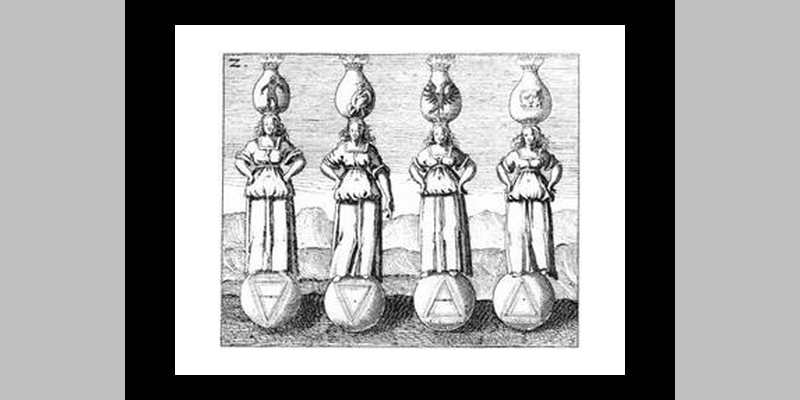
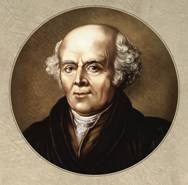

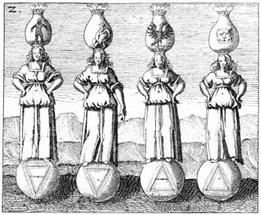
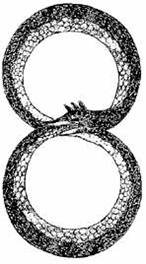
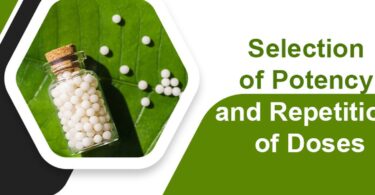
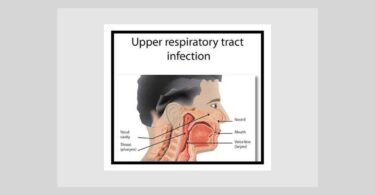
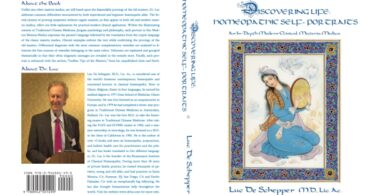
DEAR DR ,
EVERY ONE KNOWS THAT KNOWLEDGE NEVER STANDS STILL. IT IS PROGRESSIVE. HOMEOPATHY IS A NEW SCIENCE. THE RESPECTED DR HAS HIMSELF ACCEPTED THAT IN HOMEOPATHY THERE ARE MIASMS, WHICH ARE UNIQUE. THEY DO NOT EXIST IN SPAGYRICS OR ANTHROPSOPHIC. THE END RESULT IS THAT HOMEOPATHY IS SUCCESSFULLY CURING THE PATIENTS
thanks
Dear Dr. C S Gupta 2,
I fully agree with your opinion on Homeopathy. I myself use Homeopathy in my practice, and it is an extremely valuable therapeutic method which is constantly evolving. New discoveries in nanoparticle technology and ultra-magnification techniques confirm that homeopathic substances produce real changes and give results. There is no doubt that Homeopathy works.
The purpose of the article was to compare various methods of substance preparation and administration, and not to discredit any of them.
Dear respected doctor, I thank you for your comment.